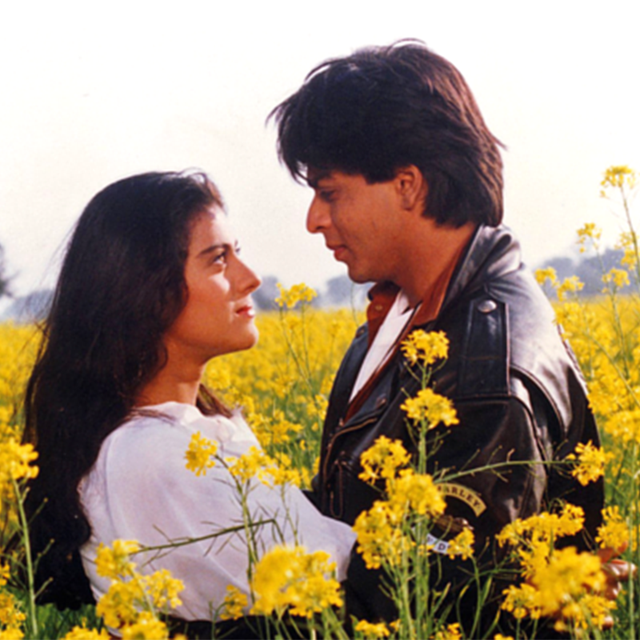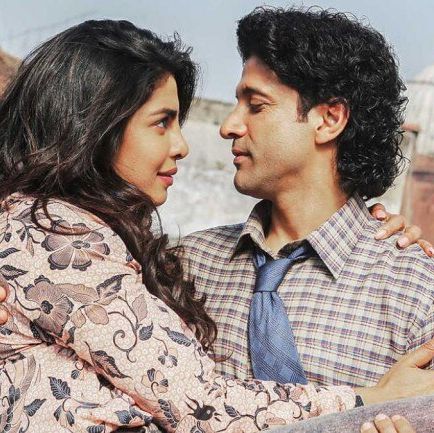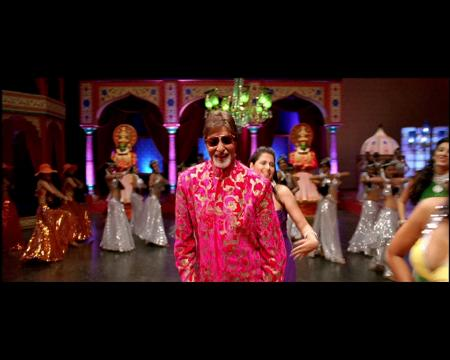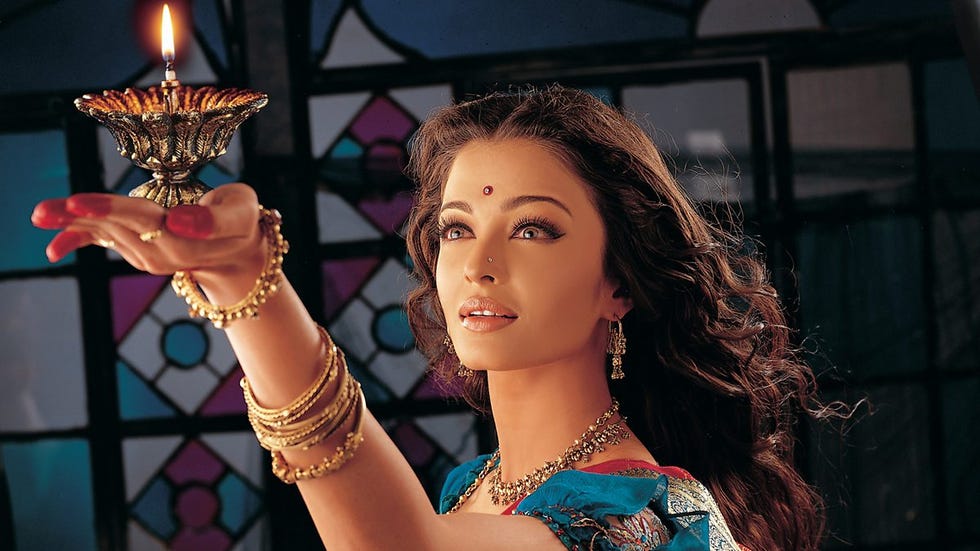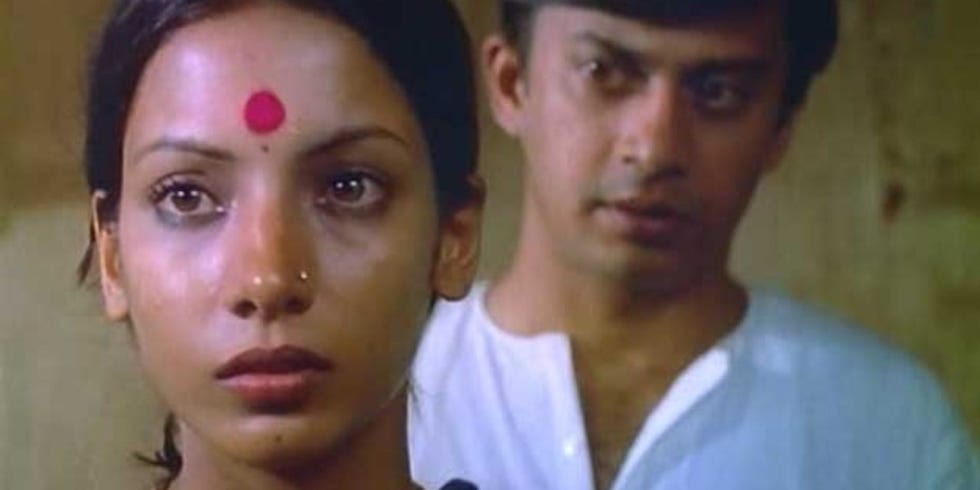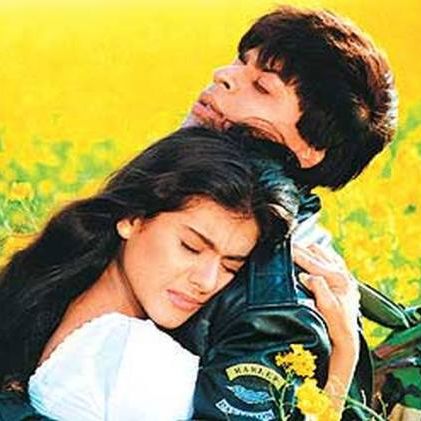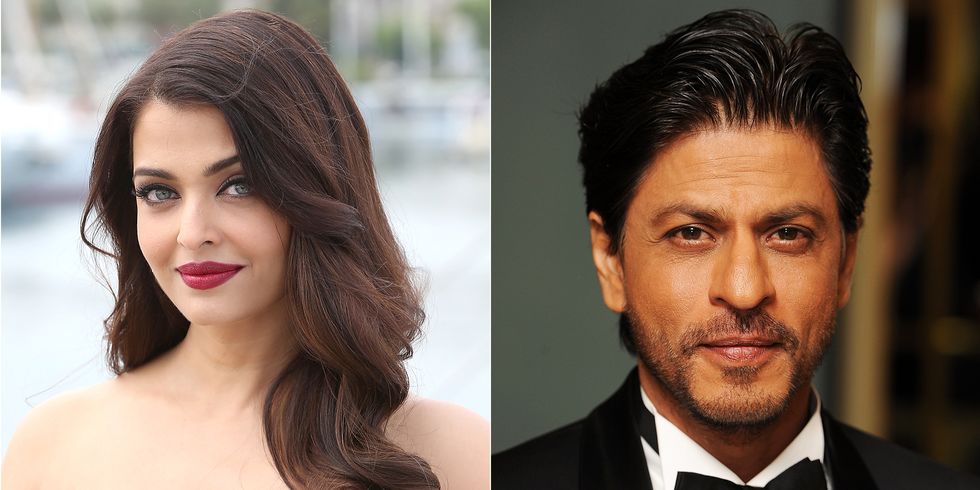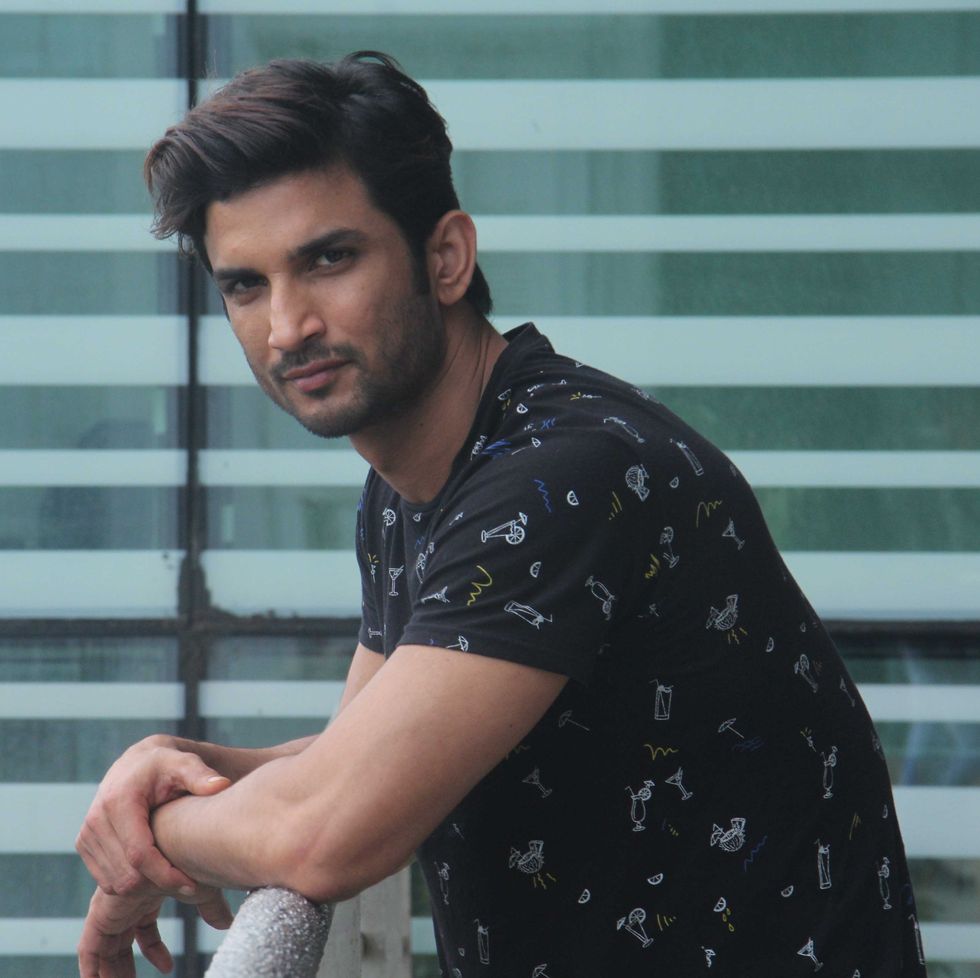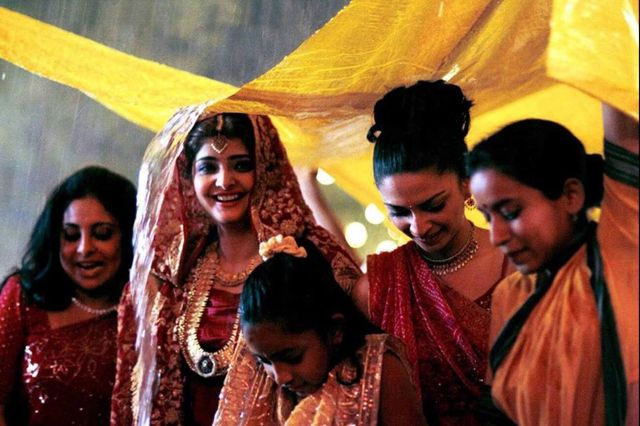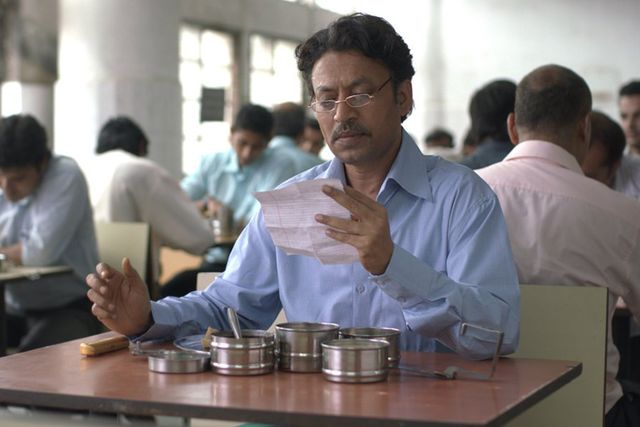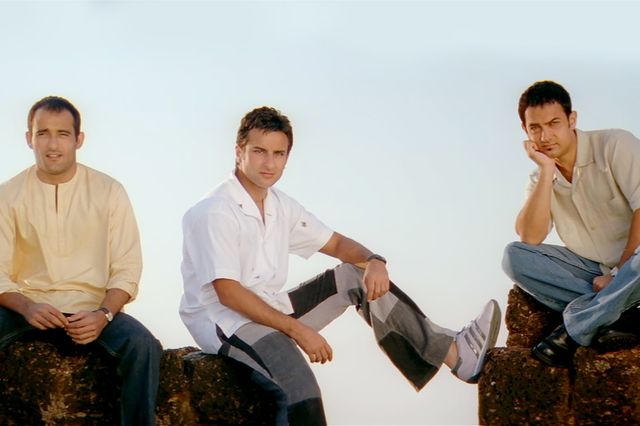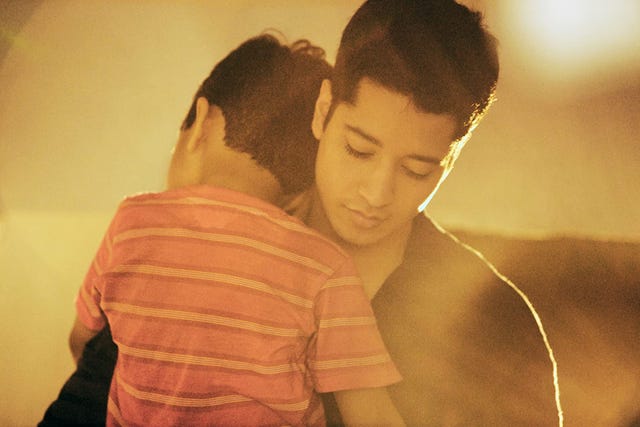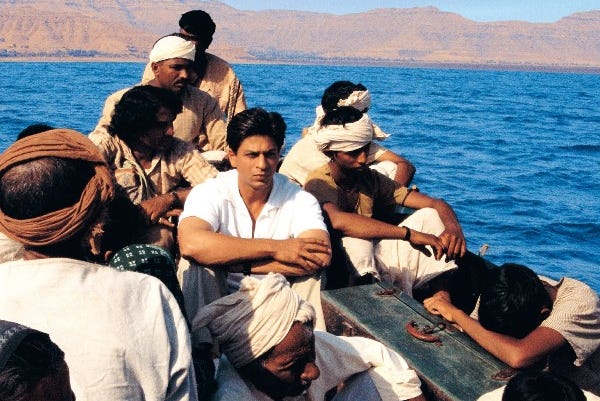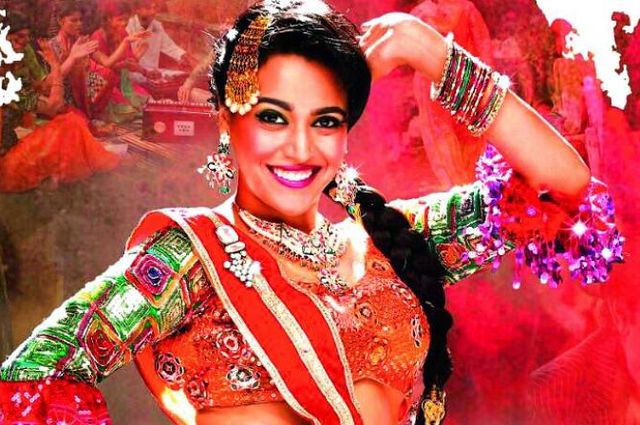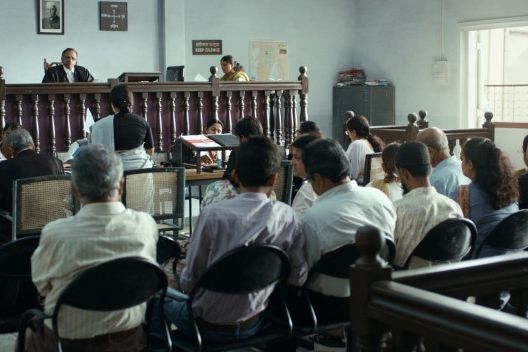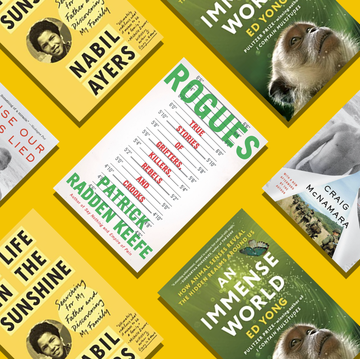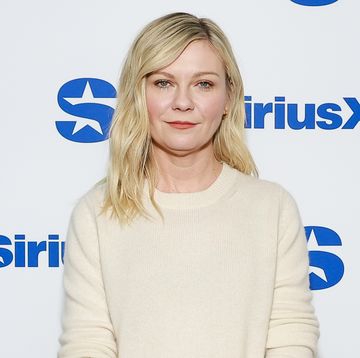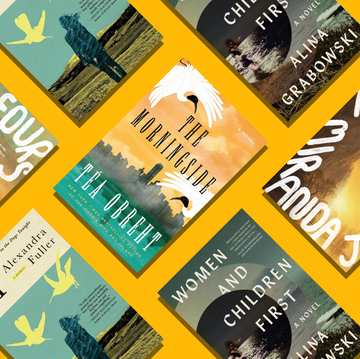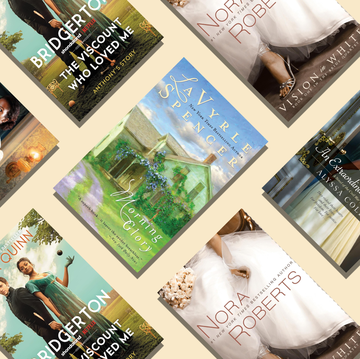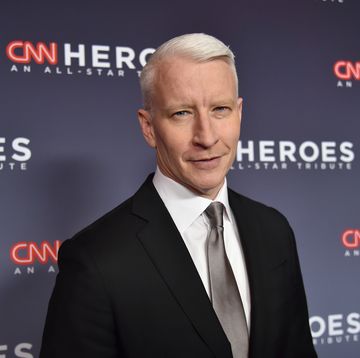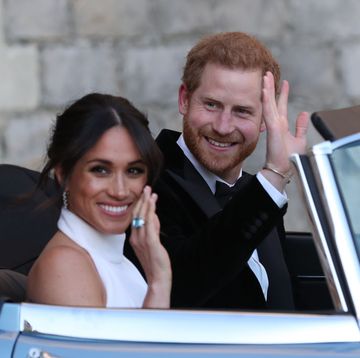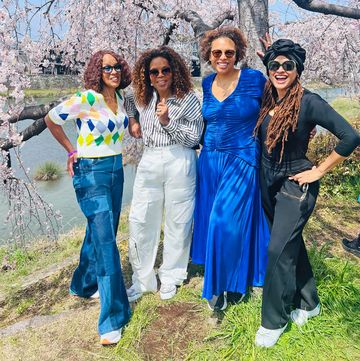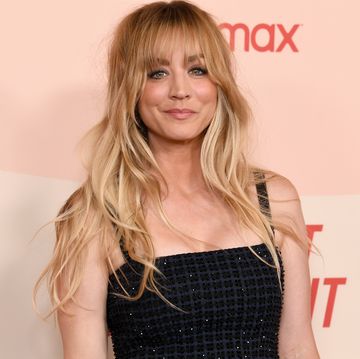Say the word "Hollywood," and images of blockbuster pictures, red carpets, and one very iconic white-lettered sign in the hills of L.A. are likely conjured. Similarly, Bollywood is known for certain fixtures—like elaborate song-and-dance sequences, romantic melodrama, and striking set design—but there's so much more to this diverse film industry where those came from.
Bollywood, a portmanteau of "Hollywood" and "Bombay" (the former name of Mumbai), refers to the Hindi-language sector of India's movie-making industry, still based in Mumbai. Bollywood is the largest sector of India's film industry, accounting for a third of movie tickets sold in India in 2020, and 44% of net box office revenue.
Producing between 1,500 and 2,000 movies a year across 20 languages, India has the largest film industry in the world (yes, bigger than Hollywood), in terms of number of films released. Other areas of India's film industry include Tollywood (the Telegu-language sector in Hyperabad) and Kollywood (Tamil-language sector in Chennai), and others. For context, these are a few of many Hollywood-inspired nicknames around the world—Nollywood refers to Nigeria's film industry; Trollywood is Sweden's; and Y'allywood is Atlanta's growing production hub.
In recent years, Bollywood has grown to epic proportions, capitalizing on seeds planted more than a century ago, when the first silent Bollywood film was released in 1913, and the first talkie in 1931. Today, Bollywood movies are tremendously popular and well-respected among India's movie-going audiences.
Speaking to OprahMag.com, film critic Shubhra Gupta says that when she started reviewing Bollywood movies for The Indian Express 25 years ago, some of her peers would pity her. "Poor you—you don't get to see Hollywood movies," she recalls. "Then Bollywood became cool. Now, Bollywood is the thing. There are so many kinds of movies that are coming out. Everyone wants a piece. It's cool to watch Bollywood now."
The popularity of Bollywood movies is reflected statistically, too. Box office revenue in India was estimated to have reached an all-time-high of $1.4 billion in 2018, with Hollywood movies only accounting for 10% of ticket sales in India in 2018 (though that figure has only grown, due to the unprecedented success of Avengers: Endgame).
Now, though, Bollywood's century-old industry is reaching a new challenge: How to surmount the global pandemic, and maintain its growing momentum? At the moment, Bollywood movies are available to watch via streaming—even if they're often best enjoyed in theaters. Here's what you need to know as you begin your own Bollywood cinematic experience.
Bollywood movies are known for their song and dance sequences.
Indian cinema evolved separately from Hollywood, and retains its own characteristics. One of the most striking examples of Bollywood's unique aesthetic are the movies' use of song and dance.
"The celebrated song and dance sequences of Bollywood show no influence of the Hollywood musical," Sabrina Ciolfi writes in the academic paper, Popular Hindi Cinema: Narrative Structures and Points of Continuity With the Tradition. According to Ciolfi, this element was borrowed from "classical theater, where music, singing, and dancing play an important part."
Typically, the music scenes are woven into the narrative plot, like small detours from reality. The singing is rarely done by the actors, giving another sense of breaking from the narrative. According to film critic Gupta, who also wrote the 50 Films That Changed Bollywood, 1995-2015, song was a way for characters to express their feelings.
"A song is a space for desire. Things that were not allowed in the public domain, [filmmakers] would put into a song. The audience knew that this was make-believe," Gupta says, fondly recalling times when fellow movie-goers would dance in the aisles during songs. "Now, we're all 'too cool for school.' We don't do that stuff in our multiplexes anymore—but back in the day, it's something we very much did," she says.
Saroj Khan, one of Bollywood's leading choreographers, passed away in July of 2020. Over the course of her 60-year career, she was behind over 2,000 dances, many of them legendary. She was known for her collaborations with Madhuri Dixit and Sridevi, who died in 2018.
As Bollywood movies become more and more realistic, these musical sequences—which featured lip synching—have changed, too. "Something that you used to take for granted no longer happens: Someone bursting into song," Gupta says. Instead, a song will usually play in the background of the scene.
Music continues to be a fixture of Bollywood movies, however, with songs from films living on as pop hits. "An Indian movie without music is an anomaly," Gupta says. "Music tells you a story. You could be saying something, but if there's music, you could be adding something to that scene."
But, Bollywood movies have transformed over the years.
The period between the '40s to the '60s is considered the Golden Age of Hindi Cinema. During this time, critically acclaimed movies like Pyaasa and Mother India came out, offering incisive and thought-provoking takes on society.
But according to Gupta, many—though not all—Bollywood movies made later in the 20th century were marked by a similar formulaic quality. "The hero had to be a really good guy—he couldn't do anything dubious or dodgy. The leading lady had to be completely pure," Gupta tells OprahMag.com. "These were the pillars around which everything revolved."
Just as the romantic heroes came together at the end, side characters reached similar fates across movies, too, with outsized villains and "bad girls" meeting their fates. "A movie that allowed its bad girl to work out without any problems was not to be accepted by the masses," she adds.
In recent years, Gupta has noted a shift in Bollywood films toward realism, and breaking from formulas. "Things have changed to a large extent. Filmmakers veering toward the more natural forms of storytelling. More realistic. People are asking: Where's the real story?" Gupta says.
Even the acting has become more naturalistic, according to Gupta. "A lot of the actors in early Bollywood came from Parsi theater tradition. Everything was over-exaggerated. People were throwing their hands around. It's taken us many years to learn the less you do, the more impact it can have on screen," Gupta says.
Some stories never get old, though. Devdas, an acclaimed high-budget movie released in 2002 and starring Aishwarya Rai and Shah Rukh Khan, was the third Hindi-language iteration of the movie. Then, in 2009, Anurag Kashyap's groundbreaking and racy Dev.D set the story in modern day New Delhi. The epic tale has been rendered into other languages, too.
Parallel cinema was an alternative to traditional Bollywood cinema.
Parallel cinema is a film movement that began among Bengali filmmakers, and ran counter to mainstream Bollywood movies in the '60s and '70s. These were ground-breaking and issue-based movies that rebelled against the mainstream mold.
"No exaggerated acting. No melodrama. No sacrificial best friend," Gupta says, describing the genre. "They picked up on themes that were germane to the lives we were leading at that point—which were not addressed at all in mainstream cinema." Take the classic 1974 Hindi-language movie Ankur, which depicts the intersection of class and caste in rural India by following a landlord son's relationship with a servant.
Gupta says that as Bollywood evolves, there's no longer a stark divide between movies. "Now, it's all part of the Bollywood scene. It's no longer a 'parallel' film and a 'mainstream' film. They're all happening together," Gupta says. For example, Anubhav Sinha's recent movies Thappad (2020) and Article 15 (2019) explore domestic violence and how caste functions within the criminal justice system.
Bollywood's signature "masala" movies combine many genres into one.
Masala movies are unique to Bollywood, but not all Bollywood movies are classified as masala movies. Essentially, this type of movie—which rose to prominence in the '70s and '80s, with films like Sholay—combines a range of genres into one film. It gets its name from the word "masala," which means "spice" in Hindi.
"You have a bit of everything: Some action, some drama, some comedy, some emotion," Gupta says, describing a classic masala movie. "You can see it. Here comes the fight scene! Here's the romantic song!"
For Anu Chugh, a Maryland-born law student who grew up watching Bollywood films, the mix of genres is the defining feature that separates Bollywood and Hollywood. "There's a thicker line between action and romance. In Bollywood, we 'smoosh' it all together," she tells OprahMag.com.
Simmba, out in 2018, is a recent example of a masala movie. However, there are Bollywood movies made in all genres. In the '90s, for example, the outright romance reigned supreme. Some hallmarks of that era include Dilwale Dulhaniya Le Jayenge, which played in theaters for 23 years, and Hum Dil De Chuke Sanam. To this day, Bollywood makes more romance movies than Hollywood, according to Live Mint. Also, currently comedies and thrillers are more popular than romances, per Live Mint.
Bollywood stars wield their own power.
Mumbai's movie industry is dominated by a few key A-listers. The actors Shah Rukh Khan, Salman Khan and Aamir Khan—also known as the Khans of Bollywood—are mega-stars coincidentally, all born in the year 1965.
Some of the most famous leading ladies include Aishwarya Rai Bachchan, who rose to fame as the winner of the Miss World 1994 pageant; Priyanka Chopra, who married Nick Jonas in 2019; Kareena Kapoor; Deepika Padukone; Madhuri Dixit; Kajol, and more.
Now, many of the leading men have their production hubs. For example, Shah Rukh Khan makes movies under his company Red Chillies Entertainment; Salman Khan has Salman Khan Films (SKF). Akshay Kumar is another powerful actor with his own production house.
"Nobody can hire them, because they're too expensive. So they make their own movies," Gupta says, adding that some women actresses are moving into producing, like Anushka Sharma.
However, the recent suicide of a promising young actor, Sushant Singh Rajput, is reigniting debates about nepotism and the uneven distribution of power within Bollywood's star system. A trained engineer turned back-up dancer turned breakout star, Rajput's career followed a "rags-to-riches" trajectory, but he never lost his status as an outsider. Some say it led to decision to take his own life.
“Movie mafia not only banned him, but I can tell you how his mind was systematically dismantled, bit by bit,” actress Kangana Ranaut said in an Instagram video, per the Associated Press.
New to Bollywood? Start with these movies.
Clearly, there is an abundance of excellent Bollywood films to watch. The question is: Where to start? While we've compiled our own favorites, Gupta provided us with her own list of recommendations, ranging from rom-coms to coming-of-age stories, all available to stream.
For more stories like this, sign up for our newsletter.
